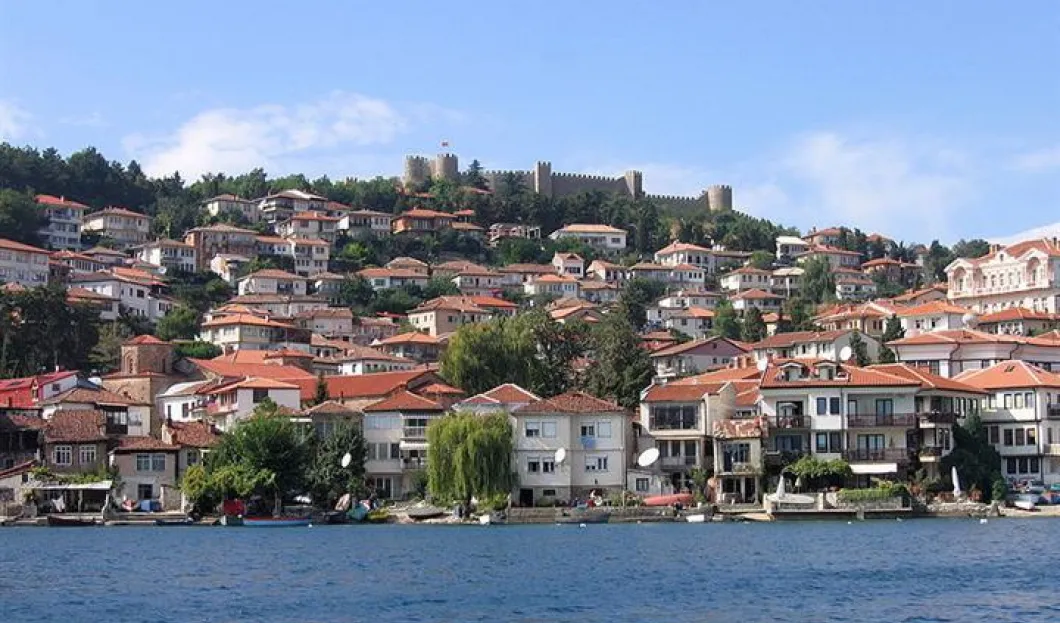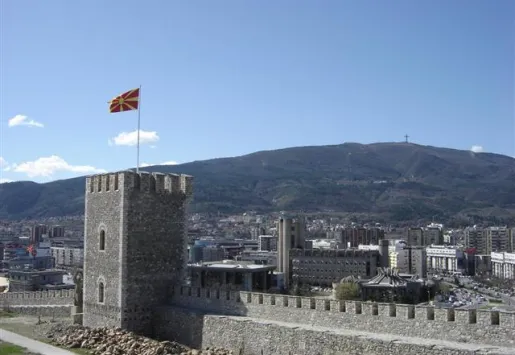
The city of Ohrid is the sublime lakeside point that for many represents the culmination of the Macedonian experience, a kingdom of light and water and a repository of ancient ruins from Macedonia’s earlier kingdoms.
Ohrid’s major attractions are all located within a walkable distance, among and above the narrow streets of the Old Town lined with restaurants and cafés perfectly suited for relaxing in the cool summer evenings. Ohrid’s many café bars and nightclubs also make for a vibrant nightlife. As for the lake itself, it is so large and so deep that one might mistake it for a small sea. Full range of water sports, fishing and boating is available, and numerous churches alongside Ohrid’s lake shores make for fascinating trips and walks. The wooded ridge above the lake’s eastern shore is largely taken up by the National Park of Galichica, an unspoiled wilderness ideal for nature enthusiasts.
The uniqueness of Lake Ohrid and the city’s historical architecture has been attested by UNESCO, honoring it with an official designation as one of the few places on the cultural institution’s list ‘World Inheritance’. Archaeological finds indicate that Ohrid is one of the oldest human settlements in Europe. The Lake itself is over three million years old. Ohrid town is first mentioned in Greek documents from 353 B.C., when it was known as Lychnidos or ‘the city of light’. Only much later in 879 A.D. was it renamed Ohrid. The name probably derives from the Macedonian phrase ‘Vo Hrid’ – roughly meaning ‘the town on the hill’.
Apart from its ancient theater (which is still in use), the ancient Lychnidos boasted a classical agora, gymnasium, civil basilicas and temples to the Gods of Greek Antiquity. When under Roman rule it developed most of the typical Roman architectural traits, and became an important transit point on the Via Egnatia trade route that bisected the Balkans. The town as we know it nowadays was built mostly between the 7th and the 19th century. During its Byzantine apogee, the town was renowned for its 365 churches and monasteries. These and a large number of sacral edifices have been preserved and make up a large part of Ohrid’s rich medieval past.
Currently, one of the city’s museums has a collection of more than 800 Byzantine and post-Byzantine icons, most of which were painted between 11th and 14th century. Art historians consider the collection as one of the most important in the world, along with those of the Tretiakov Gallery in Moscow and Mt. Athos in Greece.
By Saso Koteski















The author erred in his description of Ohrid's religious past: It was Macedonian antiquity and not "Greek antiquity". There were no Greeks in Ohrid/ Lincestis in ancient time. Greeks lived south of river Peneus. Ancient sources are explicit in this regard and modern day authors should reflect and maintain analogous attitude.